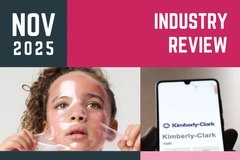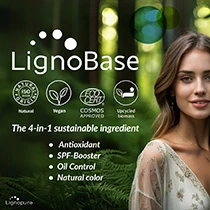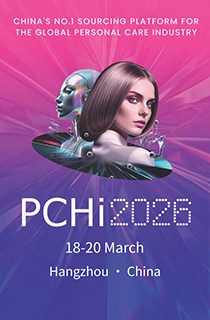Stream Sensing’s digital rheology will maximize manufacturing efficiency and sustainability, say founders

01 Feb 2022 --- Stream Sensing, a new digital rheology company, says the digital revolution for product manufacturing is underway. The company’s founders tell PersonalCareInsights it has developed an in-line rheometer which “rapidly” measures rheology. Rheology refers to the flow of liquids, and is a key aspect in the manufacture of liquid, gel, or cream products.
Stream Sensing says its device measures the mixture and incorporation of complex fluids in real time during the production process, optimizing the control process, increasing efficiency and reducing time to market. According to Stream Sensing, millions of liters of product are lost each year in the traditional rheometry process. This can be greatly reduced by digital rheometry.
“Digital manufacturing is disrupting all industries, and its effect on the personal care industry could be huge in terms of greater sustainability and reduced operational and maintenance costs through process optimization,” enthuses Stream Sensing’s CEO, Ken Primrose.
.jpg) Stream Sensing was awarded a patent for its technology in 2020.To support this revolution, Stream Sensing has developed a technology called the Stream Sensing series to aid in the manufacturing process of fluid products.
Stream Sensing was awarded a patent for its technology in 2020.To support this revolution, Stream Sensing has developed a technology called the Stream Sensing series to aid in the manufacturing process of fluid products.
“The rheology of a fluid system governs both in-process efficiency and final product quality. It is critical to the manufacturing of liquid products that we use in our everyday lives such as shampoo, and toothpaste,” explains Primrose.
If a product’s rheology is off, products may develop a suboptimal consistency, and ingredients may not be incorporated well enough to maximize efficacy. “Nobody wants runny shampoo or toothpaste and if a liquid is too thick, problems may arise with pumping and packaging,” he continues.
To fix this problem, Stream Sensing has unveiled its electrical resistance rheometer, “a novel, in-pipe, tomographic measurement capable of obtaining real-time rheological information of process fluids within pipe flows,” says senior technology officer Thomas Machin.
Stream Sensing’s rheometer versus traditional rheometry
Traditionally, to measure a product’s rheology, a sample is taken off the manufacturing line and sent to a lab for testing.
If a product’s composition is found to be incorrect, the entire batch that was being processed may have to be discarded or reworked, says Machin.
“We have estimated from published material that the annual product loss in liquid personal care products globally is the equivalent to 2,000,000 bathtubs, which is around 320 million liters.”.jpg) Primrose says Stream Sensing’s rheometer is currently being trialed by personal care manufacturers “under NDAs” in the EU, US, and Asia.
Primrose says Stream Sensing’s rheometer is currently being trialed by personal care manufacturers “under NDAs” in the EU, US, and Asia.
“It highlights the sheer volume in which products are being wasted, which could be improved with a better and more sustainable alternative method to rheology monitoring.”
Primrose affirms, “Being able to see the rheology at the press of a button allows batches to be checked immediately, reliably and then released to packaging much more quickly.”
Electrical resistance rheometry
According to Machin, Electrical resistance rheometry (ERR), “enables the characterization of a fluid’s rheological properties within a pipe under steady state, incompressible, laminar flow conditions.”
EER is reportedly an “extremely robust, non-invasive technique” that can monitor complex process fluids.
“By cross-correlating fluctuations of computed conductivity pixels across and along a pipe, using non-invasive microelectrical tomography sensors, rheometric data is obtained through the direct measurement of the velocity profile.”
“The wide-ranging applicability and simple implementation of microelectrical tomography sensors to industrial processes make it an ideal platform for the development of an in-line rheometer,” Machin affirms.
Stream Sensing’s electrical resistance sensor
“Stream Sensing was spun out of Industrial Tomography Systems (ITS) in 2020, with the specific focus to provide in-line, real-time rheology instrumentation to process industries,” says Primrose.
“ITS technology is similar to a CT scan; however, it uses electrical fields rather than X-rays.”
The technology has multiple applications, including optimizing in-vessel incorporation, as well as real-time measurement of things like curds and whey concentration in cheese manufacturing to maximize the yield of cheese in each vat.
Primrose says Stream Sensing’s technology differs from traditional rheology in that it provides “real-time rheology measurements, plus the technology can provide ‘traditional’ resistance sensing measurements of axial mixing and aeration.”
.jpg) Machin says traditional rheology methods are costly, wasteful and require more manpower than Stream Sensing’s electric rheometer. “This information can be used to troubleshoot additional problems during processing, adding value to the end user.”
Machin says traditional rheology methods are costly, wasteful and require more manpower than Stream Sensing’s electric rheometer. “This information can be used to troubleshoot additional problems during processing, adding value to the end user.”
Developed and validated through studies
Machin informs that Stream Sensing’s technology was developed at ITS and validated through government funded research involving groups like Unilever, Johnson Matthey and universities in the UK. He says the technology was further developed by an Engineering Doctorate project based at ITS and the University of Birmingham.
Machin says the tech performed well during trials. “The industrial trial focused upon the characterization of a wide range of industrial personal and homecare products, including shampoos, fabric washes, conditioner and body washes.”
“The study demonstrated that ERR measurements can accurately predict in-line rheological properties across a range of industrial personal and home care products.”
“AI algorithms can also extend the capability of ERR to capture complex fluid behaviors often observed in industrial fluids, such as shear-banding and wall depletion. This greatly enhances the in-plant applicability of the technique.”
Rise of digital manufacturing
Digital manufacturing is becoming increasingly popular across all industries, as it creates a “competitive advantage” by increasing companies’ sustainability credibility while reducing the cost of production, says Primrose.
“One such area now gaining a lot of interest is to measure clean in place (CIP) cycles – several companies are applying our technology to move from a set time for each part of the cleaning process to in-line control with resultant savings in energy and waste water, as well as releasing up-time for capacity-constrained plants,” Primrose states.
“With consumers increasingly demanding that firms take their corporate social responsibility seriously, personal care manufacturers must look at ways in which they can support better initiatives on the environment when considering their products,” he closes.
By Olivia Nelson












